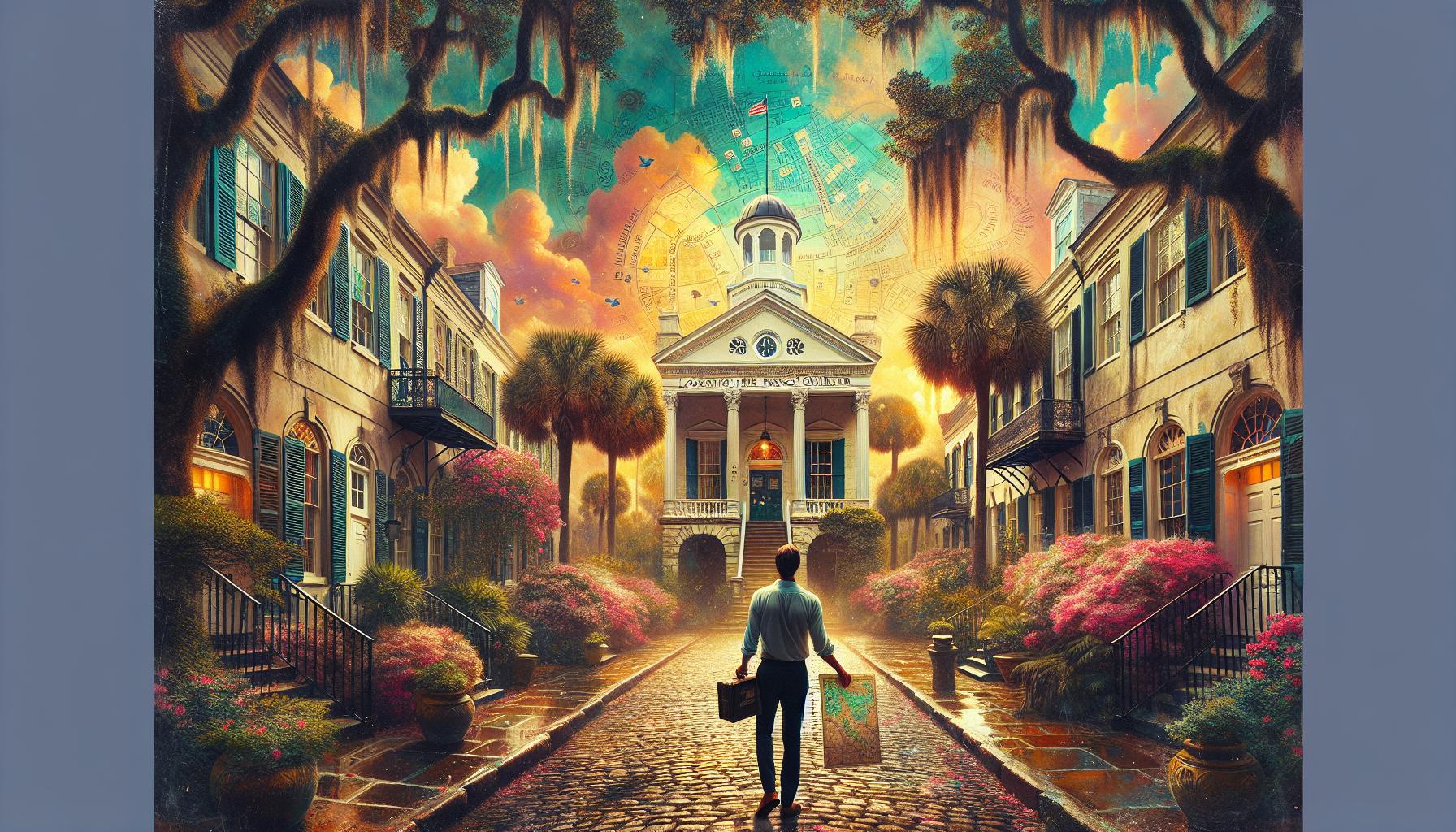
Introduction to Exploring Charleston: Where is the French Quarter?
Delve into the depths of Downtown Charleston for a moment and you may be left wondering, “Where is the French Quarter?” This hidden gem, characterized by its historic buildings and cobblestone streets, is nestled within the heart of Charleston, South Carolina. Enter the city’s time capsule and discover the French Quarter, where history and hospitality harmoniously blend creating an aura that’s nothing short of enchanting. This article aims to demystify the location of the French Quarter, unfolding its historical charm, and introducing its must-see attractions, while revealing some of Charleston’s best-kept secrets.
The Location of the French Quarter
The French Quarter, a district of grace, grandeur, and historic importance lies within the tranquil streets, idyllic alleyways, and delightful waterfront paths of Downtown Charleston. This vivacious neighborhood is cradled between Broad Street to the South, the Cooper River to the East, Meeting Street to the West, and Market Street to the North.
A Stroll through the Streets
Embarking on a journey through the streets in the French Quarter is akin to teleporting back in time. Cobblestones and bricks from centuries ago pave the path for an enlightening exploration, leaving visitors awestruck by the charm that whispers through Charleston’s history-soaked avenues.
The Historic Charm
The French Quarter is not your ordinary neighborhood, but rather one that echoes the tales of bygone eras. Named after the high number of French merchants in the area during the 18th century, the French Quarter’s allure lays in the historic buildings, churches, art galleries, boutiques, and cafes that line its streets.
Echoes of History
Each building in the French Quarter is a historical masterpiece, each with a story of its own. From old-world architecture showcasing intricate details to pleasantly haunted landmarks, this swath of Charleston is steeped in history, culture, and grandeur you won’t easily forget.
A Taste of the Southern Hospitality
The French Quarter isn’t just about history or buildings – it’s a place that embraces southern hospitality in all its charm. The neighborhood is brimming with traditional eateries, offering menus infused with the distinctive flavors of the South, boutiques showcasing local artisans, and people all too willing to share snippets of Charleston’s history.
Culinary Treats and Local Sweets
Roam around the French Quarter to treat your epicurean heart! From the distinctive shrimp and grits to the sweet benne wafers, the French Quarter offers a culinary canvas that portrays the rich culinary heritage of Charleston.
Conclusion
Nestled in the heart of the downtown area, the French Quarter rightly reflects the true soul of Charleston. This neighborhood is a perfect blend of history, culture, hospitality, and mystery. With its well-preserved architecture and a rich history that echoes through its narrow lanes, the French Quarter is certainly a gem that adorns the crown of Charleston.
Frequently Asked Questions (FAQs)
1. What are the must-visit places in the French Quarter?
The French Quarter is home to numerous historic buildings, churches, and art galleries. Some must-visit places include the French Huguenot Church, Dock Street Theatre, and the various art galleries on Broad Street.
2. Are guided tours available for the French Quarter in Charleston?
Yes, guided tours are available, and are a great way to learn about the neighborhood’s history and architecture.
3. What kind of food can I expect in the French Quarter?
The area offers a variety of culinary delights, reflecting the rich culinary tradition of Charleston. Expect to find traditional Southern fare, seafood, fusion cuisines, and sweet treats.
4. Is the French Quarter pedestrian-friendly?
Yes, the area is best explored on foot. There are numerous side streets and alleyways that provide excellent opportunities for strolling and exploring.
5. What unique shopping experiences does the French Quarter offer?
The neighborhood is known for its eclectic boutiques and antique shops. For a unique shopping experience, visit the open-air market on Market Street.


